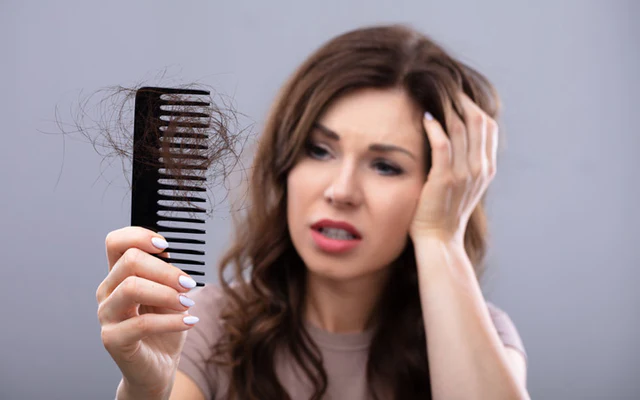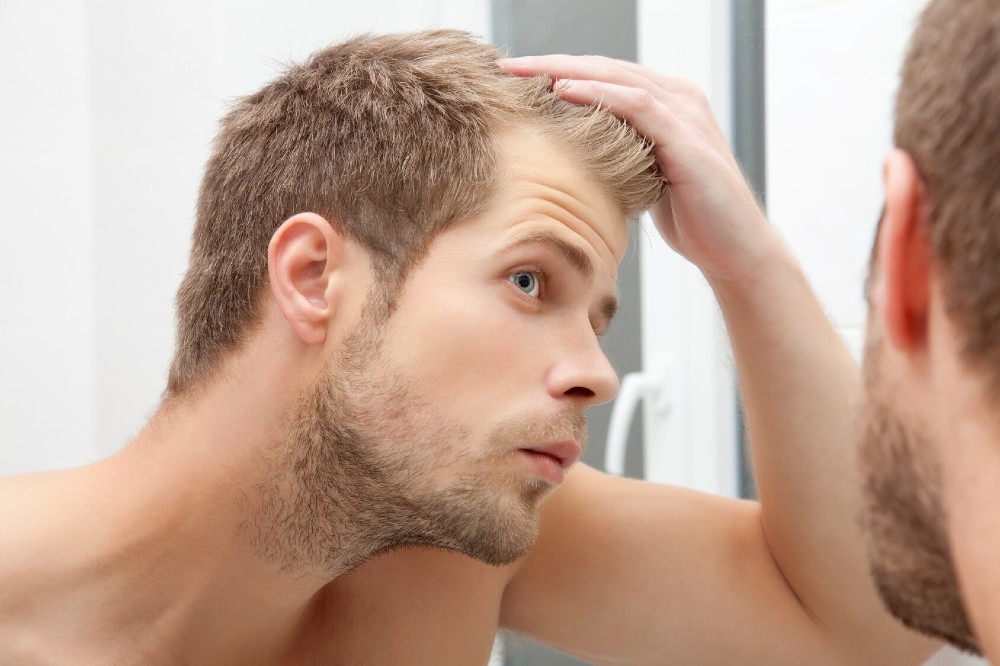Hair Loss Treatments
Less Stress and More Hair
Following a consultation and recommendation based on your objectives, our US-licensed healthcare professionals present a plan of care.
- Treating hair loss treatment options and encouraging regeneration with clinically validated methods
- pharmaceutical-grade drugs
- Absent drugstore lineups and waiting areas
- Free door-to-door shipment


Addressable Scalp Remedy
Your regular routine can easily incorporate the application of our topical scalp solution, which is used once daily. Within 4–6 months of regular use, the majority of patients usually see improvements.
- Treats hair loss and hair thinning
- Stimulates hair regrowth
- Reduces hair loss
Ingredients: Azelaic acid, ketoconazole, finasteride, and minoxidil.
Oral Treatment
Hair regeneration and thickness can be improved with our dental therapy. After constant use for several months, results are usually apparent.
- One daily tablet
- includes the same active component as in topical minoxidil (generic Rogaine).
Ingredients: Minoxidil, Biotin

How It Works
Consultation
members.
Shipped to You
your home.
At-home treatments
self-administration.

In terms of safety, oral minoxidil does come with potential side effects, including dizziness, lightheadedness, and swelling in the hands or feet. However, compared to other oral prescription medications for hair loss, oral minoxidil may have a more favorable safety profile for some individuals.
The recommended dosage of oral minoxidil is typically 0.25 to 1.25 mg taken once daily, although this may vary depending on individual circumstances. It is important to consult a healthcare professional before starting oral minoxidil to determine the appropriate dosage and to monitor for any potential side effects.
In comparison to other oral prescription medications for hair loss, oral minoxidil may be a suitable alternative for individuals who do not respond well to or cannot tolerate other options. Research findings suggest that oral minoxidil can be an effective treatment for hair loss, with potential benefits and an acceptable safety profile when used as directed.
Hair transplant procedures may lead to side effects such as swelling, itching, and minor pain at the site of treatment. Additionally, there may be a risk of infection and scarring, but these are rare.
Finasteride, an oral medication used for hair loss, can result in sexual dysfunction as a potential side effect. Other less common side effects include allergic reactions, breast tenderness, and depression. It is important for individuals to discuss any concerns with their healthcare provider.
In summary, while both oral and topical Minoxidil can lead to hypertrichosis and temporary shedding, different uncommon side effects are associated with each. Hair transplants may have minor discomfort and a small risk of infection, while finasteride use may cause sexual dysfunction and other rare side effects.
It is recommended to limit alcohol consumption to moderate levels and to consider cutting back on caffeinated beverages such as coffee and energy drinks. Additionally, it is important to monitor your blood pressure regularly, as Minoxidil can cause a drop in blood pressure and it is important to ensure it does not drop too low.
It is also advisable to discuss potential adjustments to your lifestyle, including diet and physical activity, with a healthcare provider. They can provide personalized recommendations and monitor any potential side effects. It is important to follow their guidance and consult with them before making any significant changes to your lifestyle.
By making these lifestyle changes and consulting with a healthcare provider, you can ensure that oral Minoxidil is used safely and effectively to address your specific health needs.
These doses are considered ‘low dose’ compared to the doses used for hypertension, which can range from 2.5 mg to 100 mg per day. This is because Minoxidil is a vasodilator, meaning it widens blood vessels, and at higher doses, it can lead to significant drops in blood pressure, which can result in side effects such as dizziness, lightheadedness, and fainting.
When used for hair loss, the lower doses are still effective in promoting hair growth without causing significant drops in blood pressure. It’s important to note that oral Minoxidil should only be taken under the supervision of a healthcare professional, and the dose should be tailored to the individual’s specific needs and medical history.
Hear From Our Clients
Thank you Dr. Moein and continue to be the most humble and kind doctor I know.
I had the luxury of having a close friend recommend Dr. Moein to me. She had first hand experience since she was her patient and I was lucky to be her friend and confidant.
The process was very easy, nothing like what I had imagined, I felt a need for a cosmetic procedure, went to him and seeked his opinion. He talked to me and tried to fully underatand what my expectations are from this procedure. He was super friendly and professional.
The most improtant thing for me was Dr. Moein's level of experties. His hands did magic! He knew exactly what he was doing and did not overdo anything so that he can charge me more.
The price was also very reasonable, considering what some other plastic surgeons in BeverlyHills charge for the exact same procedure.
Will definitely go back to him! Thanks Dr. Moein
How do I prepare to start oral Minoxidil ?
Before starting oral Minoxidil, it is essential to inform your doctor about all the medications you are currently taking, including over-the-counter drugs and supplements. This is particularly important if you are already on medications that lower blood pressure, as oral Minoxidil can further reduce blood pressure.
Obtaining an at-home blood pressure monitor is crucial for monitoring your blood pressure and heart rate regularly. Take readings before starting the treatment and keep a weekly chart to track any changes. It is important to bring this chart with you to your doctor appointments so that your healthcare provider can assess the effects of oral Minoxidil on your blood pressure and heart rate.
By accurately documenting your readings and maintaining communication with your doctor, you can ensure that oral Minoxidil is safe and effective for you. Remember to regularly discuss any concerns or potential side effects with your doctor to ensure the best possible outcome from your treatment.








